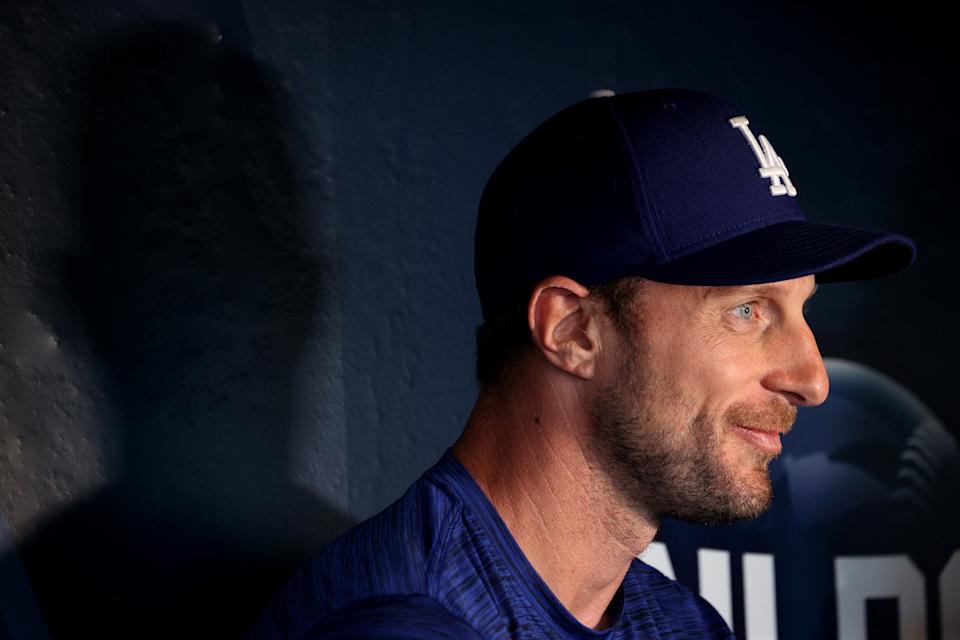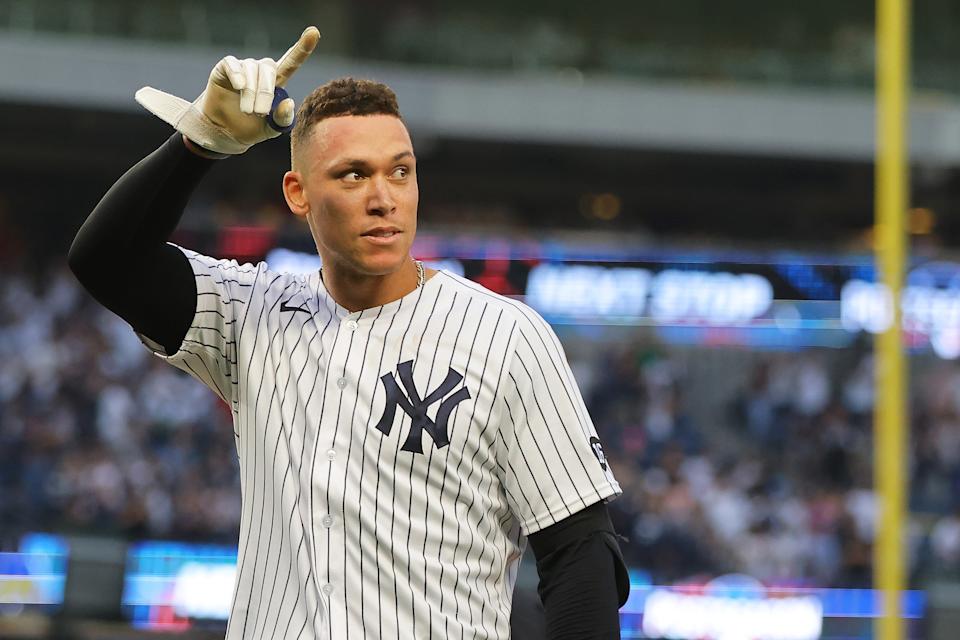There’s a line that always pops up when labor strife affects a professional sports league. Someone will surely tap it out in the comments section before bothering to read this far. You know the one: Millionaires vs. billionaires.
By flattening what is actually a monumental difference, even when it’s true, the phrase drains the sympathy for all involved in MLB’s lockout. It’s an easy jab to land after the slog of the negotiations, when fans are going to be deprived of a timely opening day, but it’s a gross mischaracterization of the stakes involved for the sport and the specific type of players who increasingly provide its lifeblood.
There are, of course, millionaires involved on the players’ side. Take free agent reliever Andrew Miller and newly signed Mets ace Max Scherzer, a future Hall of Famer who has now signed two different nine-figure contracts. They are deeply involved in the talks not just on their own behalf, but because they realize they are exceptions to the rule MLB team owners have been gradually laying down over the past decade.
“It’s not about Andrew and I,” Scherzer told reporters after commissioner Rob Manfred called off opening day. “It’s us as free agents looking backwards and realizing we need to allocate more resources to [younger players].”
That decade’s consensus best player, Mike Trout, echoed the concern for young players — present and future — in a statement posted to his social media Wednesday. He noted that current major leaguers are standing “for every player who comes after us.”
“We owe it,” he wrote, “to the next generation.”


Young players are more of MLB than ever
Under the system that has remained relatively static since the advent of free agency in the 1970s, teams retain control of players for their first six years of major-league service time. For the final three years of that span (or four years for the upper echelon of players known as Super Twos), players can negotiate salaries through a precedent-based arbitration process that gets closer to what their performance merits, but still falls short of market value.
At the end of the season in which they eclipse that six-year service time mark, players hit free agency. That’s the juncture where productive players can leverage their talents for life-changing money.
Franchise owners and front offices have systematically and purposefully complicated that path to fair compensation in recent years.
The practice of service time manipulation has turned those six years of service into seven seasons of team control for many stars, most famously Kris Bryant. And the proverbial pot of gold at the end of the rainbow has vanished for many of the players not in the game’s top tier.
Especially during the most recent collective bargaining agreement, the aging curve has shifted precipitously in the majors, with younger players appearing more and producing more.
I took a measure of this by looking at every player who tallied 250 plate appearances or 150 batters faced in each season going back to 1980. That’s essentially at least half a season of playing time for a hitter or a relief pitcher, so real, live, significant contributors. Then I looked at what portion of those players were appearing in one of their first four MLB seasons — when they would overwhelmingly be making the major-league minimum or the earliest of team-friendly arbitration salaries.
Young players made up about 39% of those regular contributors in the median season, 2011. In every full season since 2016, young players have made up at least 42.6% of those regular contributors, cresting at 46.2% in 2019. Put in raw numbers, there were 268 of those players in 2011, compared with 320 a decade later.
The gap is similarly striking for players worth at least 2 WAR, a marker of a better-than-average big leaguer. There were 82 young players who fit the bill in 2021, by Baseball-Reference’s calculations, compared to 67 in 2011.
While the root causes of that eye-opening shift are murky, the effect is anything but: Teams have caught on. Free agency is not nearly as lucrative as it used to be for useful role players, especially those over 30 years old. Plenty of these lineup stalwarts and rotation staples are now going through the usual six seasons without commensurate pay for their talents, only to find front offices are unwilling to bet on their veteran years when they reach the open market. As the effects of teams’ behavior have rippled outward, more early career superstars have signed away their prime years at suboptimal rates, defensible personal choices that nonetheless have their own chilling effects.
As more momentum builds, more money stays glued to team owners’ pockets and the avalanche grows only harder to stop. The trend, players know, is not going to reverse itself.


A reason for the MLBPA’s resolve
The union’s priorities in these negotiations have revolved around easing the inequity of being young and productive in the majors, knowing that it could also help bolster the fortunes of the middle class of veterans. Players are fighting for a higher major-league minimum salary and a bonus pool to reward the most valuable pre-arbitration players.
When talks broke off this week, the sides were relatively close on a new minimum. Where it stood at $570,500 in 2021, the owners’ most recent proposal would set the minimum to $700,000 where the union had proposed $725,000. The sides differ significantly on how much that baseline would rise over the next five seasons.
The bonus pool … is less close. Where the union came down to an ask of $85 million for the pool, the league barely inched up to a $30 million proposal. Under the union’s proposal, the pool would increase by $5 million each year, where in the league’s it would be flat.
Still, the very concept of a financial boost for the best young players would represent a significant gain for the union. As Los Angeles Angels first baseman and union rep Jared Walsh explained in an interview with The Athletic, it’s obvious that explosive rookie seasons like Aaron Judge’s or Pete Alonso’s should amount to greater earnings.
“They burst on the scene and hit 50 home runs as a rookie. I think most people would agree that they probably made their teams $550,000,” Walsh said. “I think having guys be compensated for outstanding seasons — we’ve had so many stars burst on the scene. I think that would really be important to players, just because in the current climate, six years of free agency, oftentimes some of these guys are on a little bit of the older side and maybe not getting these eight-to-10-year deals like they once did. So if we can get the really good players paid when they’re young — you got a guy like Shane Bieber who won the Cy Young, he could dip into that pre-arb bonus pool. I think that would be really beneficial for the players.”
How significant could the resolve be to push for these changes? Well, even if the eventual deal pays players only on a pro-rated basis for the 2022 season (which is still a subject that will have to be negotiated), a player making the union’s proposed major-league minimum could out-earn his full 2021 salary in 128 games.
That doesn’t even account for the possibility that he would land among the 150 best pre-arbitration players (under the current proposals) and receive a bonus from the newly formed pool.
With franchise owners reportedly facing the possibility of giving rebates on their lucrative TV contracts after 25 missed games, the players may find increased leverage in fighting for the least experienced among them.
So, yes, there are millionaires battling billionaires. But where the team owners are scrapping to avoid tiny dents to their vast profit margins, the well-paid star players are sacrificing hefty paychecks to push back on a massive, salary-stifling tide — to ensure that future stars will have the chance to turn their excellence into the millions they deserve.
